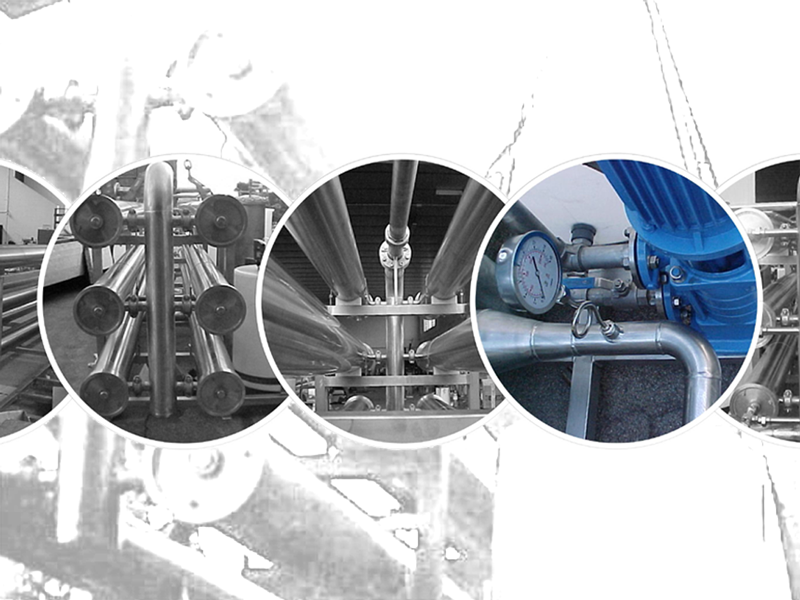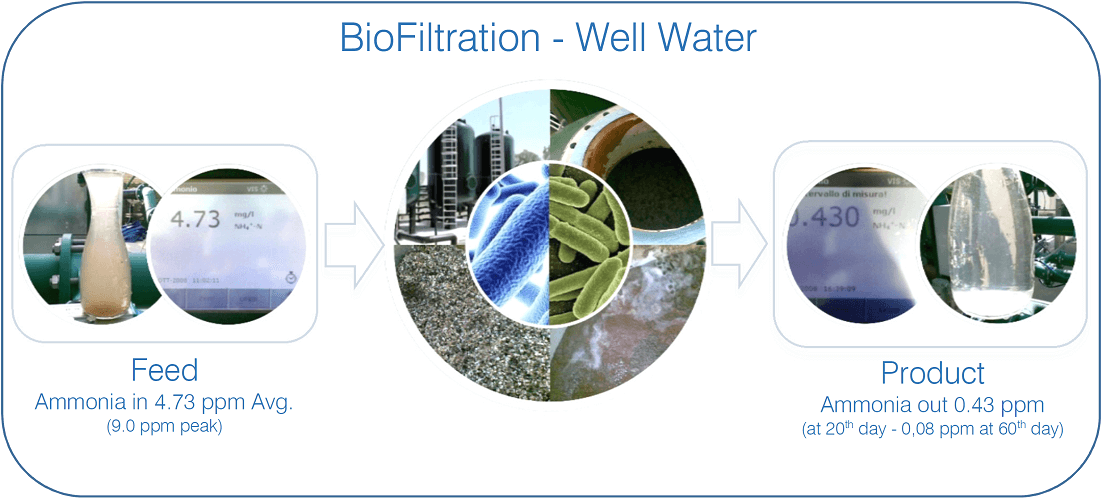
Membrane desalination: "Permeate is not pure enough? Partial Splitting is a viable solution". A real case.
- DATE:
15/22/2017 - CATEGORY:
Article - LANGUAGE:
EN
Ammonia, formula NH3, is naturally found in many aquifers, but are mainly farming and agriculture to significantly contribute to its high levels in many ground waters.
Colorless, pungent gaseous compound highly soluble in water, ammonia is a biologically active compound found in most waters as a normal biological degradation product of nitrogenous organic matter (proteins).
It also may find its way to ground and surface waters through discharge of industrial process wastes containing ammonia or fertilizers. Two important nitrate reducing mechanisms in soil, the microbial denitrification and the dissimilatory nitrate reduction to ammonium (DNRA), are indeed responsible for the loss of nitrate and for the production of the strong greenhouse gas nitrous oxide (N2O).
If nitrogen is a vital nutrient that helps plants and crops to grow, at high concentrations it is harmful to people and nature. While ammonia in water does not pose a direct health concern, nitrification within the water distribution systems may result in bad taste and odor, corrosion, unwanted increase of nitrite and nitrates.
“Ammonia is difficult to remove from water.”

It can be removed by Ion Exchange resin in the hydrogen form (1), which requires use of acid as a regenerant. Degasification can also be effective (2). Neither of these methods is easily adapted to residential use.
According to the WQA Technical Application Bulletin for Ammonia, it can be effectively and economically reduced in public and private water supplies by Zeolite Ion Exchange regenerated with salt. The natural zeolite Clinoptilolite, is also an effective ammonia treatment (3).
Ammonia can be destroyed chemically by chlorination, but the resulting product is chloramine, which is also difficult to deal with (4).
Along with the Physical Chemical methods described above there are biological approaches and BioFiltration (5) is amongst those with the highest efficiency and cost-effectiveness.
(Our-) Bio Filters operate the same way as rapid pressure filters, adding to physical filtration the biological nitrification and de-nitrification of the stream by means of naturally selected bacteria.
If Pressure sand filters design is used to shape vessels and onboard piping, internals slightly differ to account for different service and increased performances required. The BioFiltration process uses quartz sand as a matrix, hosting the growth of microorganisms “starring” in the process.
Seldom only a first chemical conditioning is required: afterwards, after a relatively-quick bacteria set-up and media colonization, only atmospheric air will be required to operate the unit. Oxygen would be preferred to air in event of a high concentration of pollutants. Once the removal of ammonia has taken place, latter reactions expected are iron and manganese oxidation, followed by arsenic adsorption in the metal hydroxides layers on the grain surfaces.
Ammonia oxidation is achieved through autotrophic bacteria while naturally occurring denitrifying heterotrophic bacteria reduce nitrate to nitrogen gas. During the process, bacteria attach to filter media, ensuring the development of an efficient biofilm. Arsenic removal is achieved through bio-catalytic oxidation and absorption within the iron oxides that are continuously produced in the filter.

The selected microorganisms oxidize into extremely dense precipitates. The accumulated iron, manganese, arsenic, ammonia and nitrates must eventually be removed from the filter through regular backwashes using a simultaneous water and air scour. This reduces backwash water consumption and ensures an efficient cleaning of the media.
BioFiltration can provide effective elimination of nitrogen and pollutants as a result of the combined effects of biological oxidation, adsorption and filtration processes.
Cost of the installation is very comparable to standard pressure sand filters: this may be the reason behind the growing demand of retrofitting old-existing standard sand-filters to high efficiency BioFilters.
Thanks for the interest.


As water becomes an increasingly expensive resource with mains, sewerage and trade effluent charges all rising...